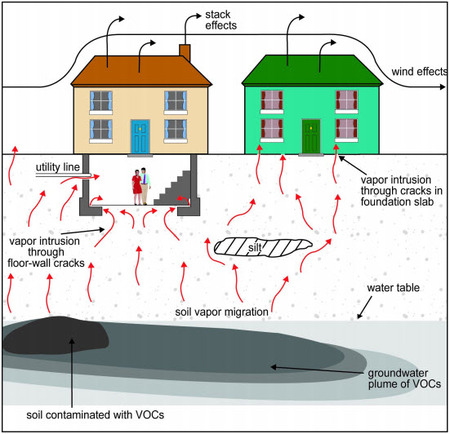After Congress passed the Superfund law in 1980, ostensibly to set up a system to clean up the most dangerous hazardous waste sites in the country, EPA created a system to evaluate the sites most deserving of attention in the form of government money for cleanup. That system, called the Hazard Ranking System (HRS), establishes a formula for evaluating how dangerous sites are to people and the environment. It looks at many things, like the chemicals involved, exposed populations, and others, and puts a mathematical value on them. If the site scores above a certain number it can be entitled to real attention in the form of immediate cleanup activity funded with government money. If the score is below that number, well………good luck. As we all know, quick action on the part of government is anything but that. But, if a site does not make the grade for what the government calls quick, the attention it will get from regulators is beyond slow. Sites can and do wallow around in the typical regulatory world for decades upon decades. Those affected are left in the cold; often, unknowingly exposed to high levels of toxic chemicals for years. One of the most direct and dangerous ways people are exposed to toxic chemicals is by breathing them in their homes. Ingestion in this way can be much more dangerous than drinking tainted water; and this is true for a number of reasons. On the one hand, exposure takes place non-stop. If the air in our home is filled with toxic chemicals, we and our children are taking them in 24/7, or at least whenever we’re home. Even while we’re sleeping. This is not true of exposure through tainted water. So, when toxicologists calculate the dose, or the amount of the toxic chemicals we take in, the doses can be very high. In addition, when we breathe toxic chemicals we immediately expose lung tissue which distributes the chemicals throughout our bodies. How do these chemicals get into the air in our homes is an obvious question. The answer quite often is through a process called vapor intrusion. Many of the most common and dangerous industrial chemicals contain volatile organic compounds, or VOCs. Simply put, this means that they like to mix with air. Anyone who has filled their car with gas knows that gas contains VOCs because they smell them, and unfortunately ingest them, every time they fill up at the pump. All over the country companies have polluted the groundwater with VOCs, which are common industrial cleaning agents. When the polluted water runs beneath our homes it off-gases those chemicals into the air, they collect beneath and move into our homes. And unlike the gas station experience, they are odorless. We don’t even know its happening. Oddly enough, when EPA established the HRS it did not include vapor intrusion among the threats to be evaluated when determining the scoring system and prioritizing sites. That remains true today even though there are hundreds of sites all over the country where we know people have been and are breathing large amounts of toxic chemicals in their homes. Case in point. We are just finishing a lawsuit filed on behalf of hundreds of people in a small town in Indiana. These folks live in homes in the neighborhood of a factory. EPA had been looking at the site under its normal “slow boat to China” process for decades, going back to the mid-’80s. It never prioritized it. The company involved was allowed to drag its feet and do little or nothing for years on end. Even when the company tested the home of its plant manager and discovered cancer-causing chemicals, it concealed that information from others in the neighborhood for years. Finally, in 2008, testing was done in some of the homes in the neighborhood, widespread infiltration of the air in the homes with cancer-causing chemicals from the factory was discovered, and we and EPA have been working to require remedies in the homes and compensation for the families. But, the sad truth is that these folks were living with and breathing these chemicals for decades. They were raising their children in these homes and had no idea they were exposing them. Parents feel like they let their kids down. They feel that their government let them down. If there is any good news, it is that we can do something about this. EPA is currently considering including vapor intrusion in the HRS analysis. To say that it’s about time is to state the obvious. But, we must make sure that it does. Such an obvious and dangerous threat can no longer be ignored. We owe it to the folks in that small town in Indiana, to their children, and to ours.
Related Posts: What Should You Do if Your Groundwater is Contaminated?, Clean Water Isn’t a Right if You Never Had It, Congratulations to McHenry County, IL, for Disclosing its Groundwater Contamination Problems, Which Chemicals are Most Likely to Contaminate Groundwater?

 Illinois Personal Injury Lawyer Blog
Illinois Personal Injury Lawyer Blog


